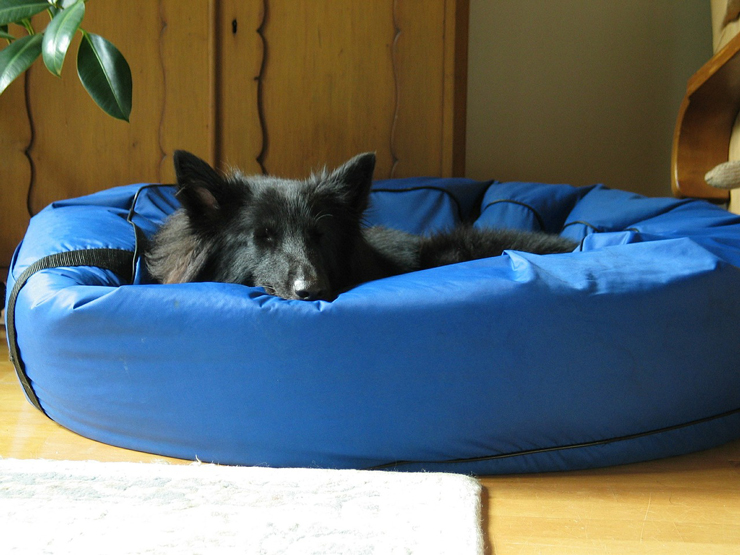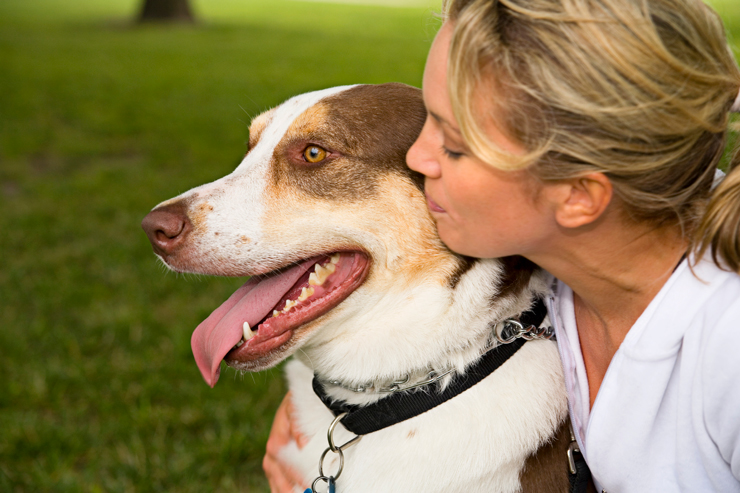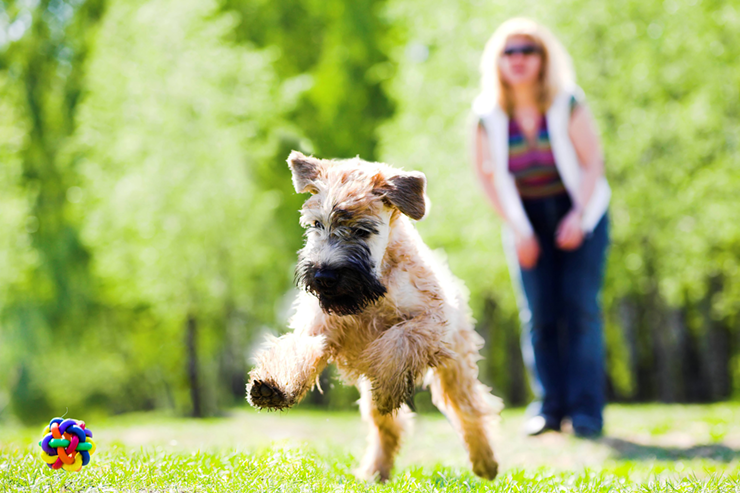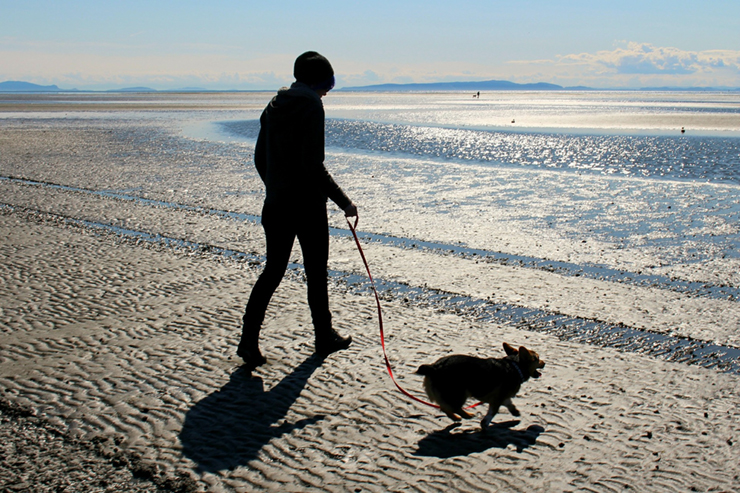
How to Care for a Dog While Working Full Time
Most dog owners would love to spend all day with their pet. What could be better than being a full-time dog parent?
This isn’t always realistic though. Many dog lovers work throughout the day, which is why “Can I have a dog while working?” is one of the most common questions asked by prospective owners.
It’s great when potential owners ask this, as it shows they are prioritizing their future pet’s wellbeing. Dogs are companionable animals and often don’t cope well with being alone for long periods. Most dogs love spending time with humans, and become stressed or bored when left at home.
Having a full-time job doesn’t necessarily mean you can’t have a canine friend though. Here are some tips for caring for your dog while working during the day.
1. Decide Whether Your Lifestyle is Suitable for a Dog
It’s important to be realistic about whether your lifestyle is suitable for a dog. While it’s possible to care for a dog while working full-time, doing so requires sacrifices and planning.
Here are some questions to ask:
- What is the maximum time my dog could be left alone? If you come home for lunch every day, the maximum time alone may be around four hours. This is a long time, but manageable for most dogs. If you have a long commute, however, your pet may be alone for 10 hours or more—which is too long for any dog.
- Aside from work, how much time do I spend at home? If you have a busy social life outside of work, you may not have time to give your pet the attention and exercise he needs. If you won’t be able to spend time with your pet, it’s best not to get a dog.
- Can I afford a dog walker? If you can’t come home at lunch, you’ll need someone to walk your dog each day. The cost can add up over a long period, so make sure you can afford it.
- How does my dog cope with being left alone? If your dog suffers from separation anxiety or is easily bored, it might not be fair to leave him at home.
As a general rule, dogs shouldn’t be left alone for more than three to five hours. If you need to leave your pet for longer than this, you should arrange for someone to visit during the day.
You also need to consider your dog’s background. A dog that’s used to being with humans throughout the day is likely to struggle if suddenly left alone for long periods. But if your pet has always spent time at home, he’s likely to just go to sleep—assuming he’s given plenty of exercise and mental stimulation.

2. Provide a Comfortable Environment
It’s vital that your dog is left in a comfortable environment, as this will help him feel relaxed during the day. The perfect environment includes a comfortable bed, plenty of water, a few toys, and lots of space. Make sure there are no potentially dangerous objects within reach, too.
You should never leave your pet in a crate throughout the day though. Keeping a dog confined in such a small area for long periods isn’t fair—even if the crate has comfortable bedding.
3. Try to Come Home for Short Visits
Do you work near home? If so, you might be able to come home for lunch or even just a quick visit. This can make a huge difference in your dog’s day—especially if you have time for a quick walk or play.
Coming home to spend time with your pet can also make the average work day more fun!
4. Find a Reliable Dog Walker
If there’s no opportunity to visit your pet during the day, you’ll need someone to come and visit. There’s no getting around this—dogs can’t be left alone for an entire day.
Finding a reliable dog walker isn’t always easy, though. While there are plenty of great walkers, there are also many that should be avoided. Here are a few tips for choosing a reputable walker:
- Introduce your dog to the walker beforehand. One of the bet ways to judge a walker is to see how they behave with your dog. Do they seem comfortable interacting with your pet? Are they willing to answer your questions? Or do they seem evasive?
- Ask about the walker’s training. Does the dog walker have training to recognise dog body language? If they walk more than one dog, are they trained to manage interactions between canines? A walker should have professional training to give your dog a positive and safe experience.
- Check how many dogs he/she walks at the same time. Some dog walkers walk ten or more dogs on the same trip, as this allows them to earn more money. Aside from being more dangerous, this also means the dogs don’t get the individual stimulation they need.
- Ask who does the actual walking. When dealing with larger companies, the person you speak to often isn’t who will be walking your dog. If more than one person will be walking your pet, ask how each has been trained and vetted.
- How long is each walk? Some dog walkers quote a time that includes transport and picking up other dogs. Make sure you know how long your dog will be walked – not how long he’ll sit in the car.
- What training methods does the walker use. This is one of the most crucial questions, as you don’t want a walker who uses negative or punishment-based training. The purpose of walking your dog is to provide a fun experience, not to cause extra stress.
5. Keep Your Dog Entertained and Mentally Stimulated
The mornings and evenings are vital for providing mental and physical stimulation.
It’s often best to go on a short walk in the morning—even if a dog walker will provide your pet’s “main” walk later in the day. This lets your dog burn off some energy, so he’s more likely to sleep throughout the morning.
Don’t forget about mental stimulation, too. Dogs can easily get bored, so games such as “find the toy” are great for getting their brains working. These games can also tire your dog out, so they are a useful alternative to a walk if you don’t have time before work.
For some extra mental stimulation during the day, you might want to consider a pet camera with two-way audio. These cameras allow you to check on your pet and talk to him via your phone. Some have extra features, like treat dispensers and two-way videos, so you can do basic trick training remotely. While a dog camera isn’t a replacement for a proper walk or play, it can be useful for providing some extra entertainment.

Ultimately, providing a happy life for a dog while working full-time isn’t impossible, but you need to think carefully about whether your lifestyle is suitable. You should also consider the temperament of your pet.
If you decide you can manage a pet while working during the day, it’s vital to ensure your dog’s physical, emotional, and mental needs are met. A dog walker is a great option if you can’t come home during the day—but make sure you spend lots of time with your pet in the evenings, too.














